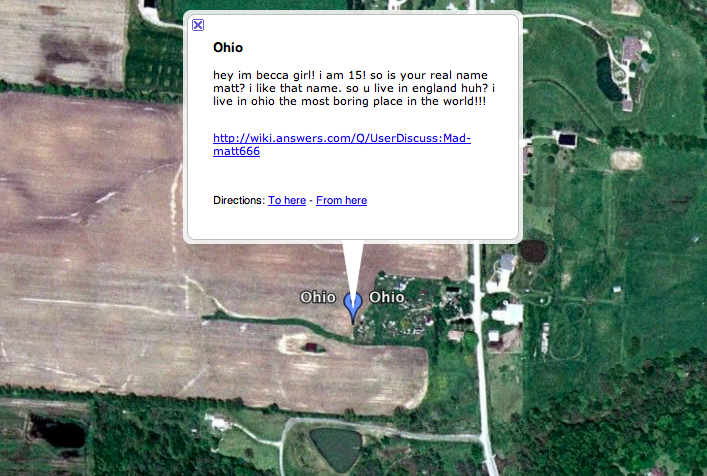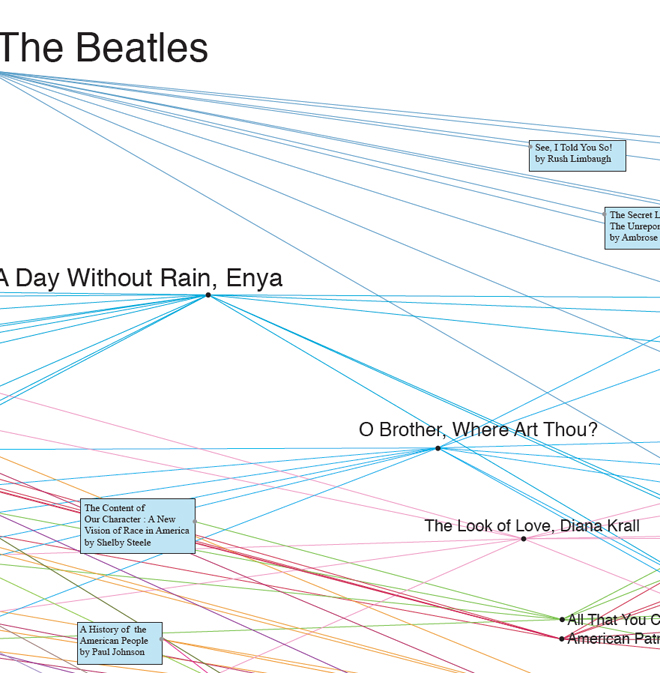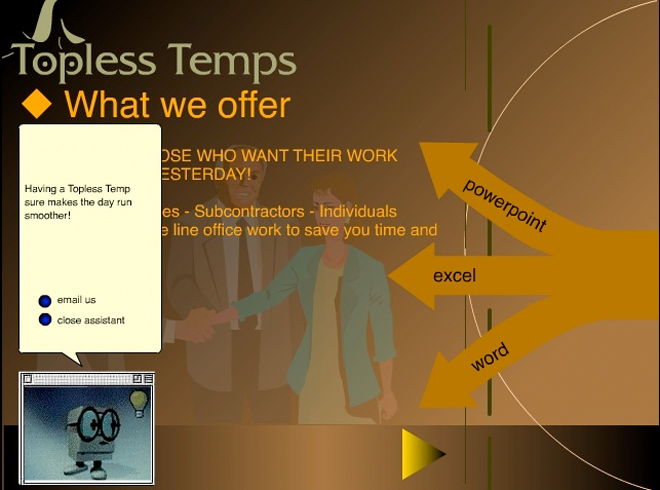Thursday, December 8, 2011
Monday, November 21, 2011
News from the DAC Constellation
Just a few updates of things around the DAC Universe.
Robby Herbst, who is presenting his project New Pyramid for the Capitalist System in February, has been interviewed about Occupy LA, his performances and related matters:
http://suebellyank.com/2011/11/08/occupy-laaaaaa-artists-in-solidarity-robby-herbst-edition/
Aeron Bergman and Alejandra Salinas are interviewed about their newest Feng Shui performance at 0047: http://www.kunstkritikk.com/nyheter/feng-shui-som-kuratorisk-verktoy/
(The site is in Norwegian, but the video is in English). Bergman and Salinas exhibition this fall at DAC was arranged in consultation with a Feng Shui master.
DAC Director Karl Erickson wrote a short essay at the Dumbo.is site about the economy as an exhibition theme, collaboration and community: http://dumbo.is/culture/posts/guest-post-art-and-the-economy-with-dac
Sunday, November 13, 2011
Interview with Adam Overton of the experimental meditation center los angeles

(Adam Overton sharing a workshop)
Last October, DAC was privileged to have an esteemed member of the experimental meditation center los angeles by to lead a work of experimental meditation practices. A small group headed to Brooklyn Bridge Park for an afternoon of exploration.
The experimental meditation center of los angeles is a frame[work], a magic circle, a safe space, a temporary autonomous zone, a performance space... for the facilitation of artist-led meditations. We’ll be exploring some meditation best hits, plus some full-throated group meditation strategies good for beginners and gurus alike. The experimental meditation center of los angeles has no center!
I had a chance to have a quick conversation with Adam Overton over email about the center, laughing and more.
-Karl Erickson
Karl Erickson: The experimental meditation center of los angeles (and all of your related projects) all have a lot of humor to them. Is there something that the humor lets you do, that maybe you couldn't do if you approached the spiritual angle straight-faced?
KE: Any thoughts on "laughing yoga"?
KE: Do you think there is a spiritual difference between NYC and LA?
KE: Is spirituality an end to your art practice or a means?

(meditaters in Brooklyn Bridge Park)
Thursday, October 27, 2011
Interview with Aeron Bergman and Alejandra Salinas on the Occassion of their Exhibition at DAC
For Profit,
Dear Merchants of the Town,
My Hat
Laden With Snow
Aeron Bergman and Alejandra Salinas have developed an an art practice that is highly intelligent and steeped in conceptual art tradition while being formally beautiful. Their work is of the highest order of seriousness - in subject matter, execution and comportment - while exuding a wickedly humorous sense of sarcasm. On the occasion of the last week of their exhibition at Dumbo Arts Center, I had the chance to interview them about their work, politics and art, humor, mortality and a displeasure with Kant. Their installation can be seen online here.
-Karl Erickson
KE: The series of fine china plates engraved with Chinese Tang dynasty poems, Lords of the Capital, are all quite striking, especially since the poems have an incredible resonance with today's struggles of economic disparity. The poem on one plate reads:
"Ashamed though I am
Of my high position,
While people lead unhappy lives,
Let us reasonably banish care
We bow, we take our cups of wine,
We give our attention to beautiful poems"
This goes to the heart of a problem many artists have at all times, let alone time of extreme political strife: what roles do they and their art play in culture? This is a long set-up for the question: Since your work quite often has a political edge, what function do you hope for your art to have in that discussion? Related, what part do aesthetics, "the beautiful" play in this discussion? In your statement for the show, you write of contemporary art being "irrelevant activity." If this is so, why reference, or speak of, politics in your work?
Aeron Bergman & Alejandra Salinas: Questions about the political relevance of art are related to the “my kid could do that” comments heard in provincial art museums. Alternative culture feeds dominant culture (see Raymond Williams theories of Cultural Studies). Sometimes memes are co-opted as a style, but sometimes the real essence of the stuff alters the mainstream. Think of woman's right to vote and gay rights: once unthinkable, the tireless expression by an alternative cultural force changed and will continue to change mainstream policy and opinion.
Today’s public sphere determines that any labor without an immediate (economic) use value is irrelevant and therefore abhorrent (Hannah Arendt). So-called "irrelevant" labor such as art and tending to a house-cat is therefore a protest action and confronts our alienation.
We also think of the work as logging a kind of “evidence” for the future.
KE: While installing the show, we talked a bit about the aesthetics of conceptual art, stereotypically low-res, black and white, text heavy. You had mentioned wanting to make your work, in essence, more beautiful than is traditionally associated with "idea-based" art. The show
is gorgeous, and on first blush, appears somber. Closer inspection though, reveals some wicked humor and heavy ideas. What do these tensions between the "conceptual" and the "aesthetic," between the "serious" and the "humorous" do for you?
AB & AS: Tension is good. Yin / yang man. Fuck Kant.
KE: You reference Hannah Arendt and ideas of domesticity and "the art of being happy among 'small things'" in your statement, too. Could you speak to this notion in relation to your work, especially considering that the work in the show, though modest in scale, has as it subject matter big themes: Death, Memory, Permanence and Value.
AB & AS: We should probably blow up all our work to outrageous proportions, it would help our career. Or perhaps we should just hand out magnifying glasses at the door.
Most of us, especially us non-billionaire city dwellers, live in small spaces that we care for with irrelevant tenderness. This is the meaning of life.
KE: In whole, the show feels very quiet and static, even the video is of still shots of marble and granite surfaces! From the wave etched on a granite grave marker to the Tang Dynasty poems to the currency pieces (which are linked to a specific date), to the "freezing" of the Wikipedia and
data error images, the show seems to slow and elongate time. In a sense, to preserve a moment. yet, it also calls attention to the seeming impossibility to preserve anything, if you take a long enough view. So, is the show optimistic or pessimistic about our future?
AB & AS: Freezing time and energy is what reification is all about: documentation of expenditure, dead on arrival. We wanted to preserve moments that are otherwise in flux such as currency exchange and Wikipedia entries. The work is neutral, a series of statements. However, we ourselves feel very bleak about our own futures and the futures of our working class families.
KE: The show was arranged in consultation with a Feng Shui master, Pun Yin, and featured a performance by an Ikebana artist, Lily Pu. These are systems that were allowed to "succeed" in the context of the show. But in other ways, the show is about system failures: Wikipedia entries have to be policed or else the idea behind them of crowd sourcing knowledge can be hijacked. The data error pieces are literarly frozen moments of breakdown. The funerary elements of the patents of grave markers and the Future Monument (death being the greatest system failure). The cash pieces highlight a failing global economy. As mentioned, the show postulates that preservation is not an option, that all of our systems for doing so are doomed to fail. Do the two different systems that were allowed to succeed, Ikebana and Feng Shui, represent a way out of a failing system?
AB & AS: Individuals are mortal, but the immortality of mankind happens via our res publica. Memes and meme systems are archived through us: ideas and traditions are passed down through generations, altered to suit each new condition. Traditions such as Ikebana and Feng Shui come from ancient, murky origins and are passed down, altered, through the generations. Capitalist attempts to freeze traditional knowledge such as the California “master” who tried to copyright yoga poses, or tombstone design, are doomed to fail. The biological archive will outlast the age of kleptomania.
Monday, October 17, 2011
Interview with artist James Leonard

(James Leonard is his "Warbonds Performance)
James Leonard is an intense, dedicated artist exploring consciousness, the environment, history and the artistic process itself. His work is a veritable maelstrom of systematic, complex ideas, wry humor and outrage.
James has shown his two video portraits "Captain America" (narrated by comics-fan Lazzarus) and "Magic" (in which fetish model Jax recounts her ten year history working as a horse whisperer) at DAC over the summer and on Wednesday, October 19th will be performing his ongoing "Warbonds Performance" at 7 PM. He recently had a show at Open Source entitled 927 Days at Sea, which featured his "No Fishing Signs." James generously took time out of his busy schedule to answer a few of my questions about his work, America, his artistic approach and fractals.
-Karl Erickson
Karl Erickson: A lot of your work has a distinctly American vibe to it. I'm thinking of the "No Fishing Signs," the video portraits of Lazzarus and Jax and the barbed wire fences in particular. Each seems to have traditional American concerns: sprawling narrative, independence, and even a sense of manifest destiny. Is a sense of national identity a concern of yours?
James Leonard: I don't think I'm overtly interested in national identity, per se. At least not in isolation from all the other sources of one's identity such as gender, generational cohorts, personal psychological and spiritual histories, etc. But I have over the years grown increasingly self-aware that there are elements of Americana laced throughout most of my work. Initially, I wasn't aware that of the pattern. It was over a decade ago when another artist and friend, Jason Mombert, first brought this observation to my attention. I was at a different stage of development artistically. I think the recognition initially sparked some desire for me to run with Americana as a theme, enough that I'm sure it influenced my editorial choices in the studio. You know how it is when as an artist you find yourself with too many ideas to pursue in any given year and you have to make a decision? Well I think at first I was weighing those that more overtly played with American iconography, I probably weighed those ideas more heavily. Ironically, in just the past couple years, I think I've been actively trying to get away from such overt American icons. It's funny that you include my most recent body of work, the "No Fishing Signs," in your question. But I see how those too could even be included as an extension of my engagement of these American icons. I guess some habits are hard to break.
It's also interesting that you mention Manifest Destiny. That notion is mentioned by name during the "Warbonds Performance." I have a number of works, topographic paintings, map pieces and the barbed wire fences that all engage our relationship to landscape. The "No Fishing Signs" are definitely the spiritual cousin of these works, directly engaging in some ways our industrialized relationship to the seas. Despite it being my own work, I've never really thought of these relationships to landscape as also a relationship to the notion of Manifest Destiny. But I think you may be onto something there. I think I have a strong ambivalence regarding Manifest Destiny. I see cultural and policy biases based strictly upon utilitarian relationships to the land getting us long term into a lot of trouble. Peak oil. Soil depletion. Collapsing oceans. And yet there is still something seductively heroic about the mythology surrounding American Manifest Destiny.
(Jax in James Leonard's "Magic" video portrait)
KE: To continue with the American theme, how does the self-made and the hand-made inform your work? I draw a distinction between the two in that the self-made has the aura of "pulled up by one's own bootstraps" and the hand-made is literally that: made by the artists own hands.
JL: Our relationship to the hand-made is definitely something that directly informed my work for many years. I explored this theme mostly by actively working against it, mirroring what I saw happening in our consumer culture. As more and more industry has left the States during my lifetime, I witnessed us transforming from a nation of capable craftspersons to a nation of consumers. I think factory made objects for most Americans are accepted as a fact of nature, as much as any stone or leaf, when in fact they are all really human contrivances. I think for at least eight years, I was interested in directly addressing this cultural reality. I actually find this shift in our relationship to manmade objects rather depressing. To me it implies many members of our society getting locked into an eddy of consumerism. Endless plastic crap.
("No Fishing" by James Leonard)
In the past four or five years, I've made something of a departure from addressing the shift in our relationship to objects from makers to consumers so directly. This has coincided with my own personal growing interests outside my artwork in things like the slow food, slow money, sustainable living and most recently the Occupy movements. I have at times wondered what the cultural shifts represented by these could offer contemporary art. Does contemporary art as we know it, primarily an exhibition based manifestation of the arts, even have a place at the table in a sustainable future culture? It's not an easy question to answer. One could run away entirely from exhibition arts and focus on something such as knitting wool caps to be sold at the Brooklyn Flea. But after dedicating so much of my life to exhibition artwork, from our historical era and from others, that evokes deep spiritual intellectual aesthetic experiences--where the whole brain and body continuum participates in the generation of meaning--well, I'm not quite ready to walk away from that yet. I firmly believe that an active robust internal spiritual and psychological life are essential to each of our abilities as individual productive citizens making relatively sane choices and positive contributions to the world. I think the kind of art I produce has deep value for society, even if it is not direct utilitarian value. So as we move into this next chapter of human culture where we in the developed world begin to restrain our consumption and alter our lifestyles, a significant amount of adjustment and reinvention of our role as artists making art for art's sake is in order. And this is where notions of the self-made come into play. Both within the arts and more widely as we begin to challenge and remake our culture. It's part bootstraps and part postmodern road warrior scavenger. Invention and recycling coexisting in the same space.
KE: Your work also has a "grand vista" quality to it, in that nothing is small, either in length (the oral histories of Jax and Lazzarus), extremely large editions of multiples (the un-Suicide Note, the "No Fishing Signs", the War Bonds) or in repetition (the figure drawings, the multi-dimensional cube drawings). Is the goal to overwhelm the viewer and/or yourself?
JL: Scale is very important to me. I have a fractal understanding of the universe, fractals being shapes of partial dimensions with patterns repeating over a scalar dimension. As you zoom out our in, certain forms and shapes repeat. It happens in coastlines. It happens in trees and leaves. It happens in social networks. I can't help but see many more abstract philosophical and phenomenological aspects of our existence through this lens. I think that sometimes I'm swapping the fractal scalar dimension of D with a time dimension of T in effort to draw out fractal like patterns of meaning that emerge over time as themes and notions seem to reiterate themselves. This is also very akin to the phase space of any strange attractor--a concept I try to make a little more widely accessible in the Warbonds Performance. The strange attractor is a mathematical form representing the collapse of an infinite range of possible outcomes of a given self-sustaining dynamic into a tighter range of possibilities. In short, it's a mathematical means of proving that though something like our weather systems will never be 100% predictable, we can say with certainty that it is never going to rain gumdrops and Yankee's shortstops.
The goal never really has been to overwhelm myself or the viewer with this material. Instead, that's always been just a side effect of the more successful ventures. Increasingly in my studio practice I am directly engaging trance states and altered states of consciousness. In part because I think much of what I am exploring currently lies at the limits of our cultural and individual consciousness. The multi-dimensional cubes you mention are specifically in this territory. I started doing freehand drawings of those 4, 5 and 6 dimensional cubes in an attempt to gain some sort of direct phenomenological understanding of higher dimensional spaces--something many mathematicians and engineers regularly navigate from a numerical perspective. But I wanted to understand these higher dimensions spatially as an artist. The result? A total headtrip.
KE: So, if you go into this headtrip, do you want the viewer to get lost as well?
JL: I don't think getting lost in the work is necessary. But I think if someone really engages a number of my pieces over time--getting lost is inevitable. I spent the greater part of a decade, including two years in graduate school, studying modern complex systems theory. I think a majority of the insoluble problems we currently face as a civilization--peak resources, peak fossil energy, over population, unavoidable significant climate change, increasingly dysfunctional systems of civic representation, collapsing financial systems--will only be able to be addressed when many of the basic understandings present in complex systems theory find their way into popular cultural understanding. Paradoxically, I think that many of these tenets will only become relevant to most peoples as we actually begin to seriously tackle any of these problems.
I often imagine that for many people, the shattering of the heavenly spheres and the geocentric universe that accompanied, was a similarly overwhelming experience intellectually and spiritually. During massive rapid cultural transformation, I imagine that most of us will feel like we are falling for a bit. So I guess for the greater good of mankind, I hope we do get lost in these heady, exciting spaces for a bit. But not so lost that we never find solid footing again.
KE: There is a tone of violence carrying through your practice as well: overtly with the Warbonds, as subjects in Lazzarus's re-telling of Captain America, and implied (the barbed wire fences, the "No Fishing Signs"). Is violence equitable with anger in your work? If so, towards what?
JL: I don't know if it's anger. I mean some of it likely is. But in some cases it might be alarm. Or in other cases just more descriptive. Though violent, a tornado or an earthquake aren't really angry. They may be poetically speaking. But through many lenses, their inherent violence is just a matter of rapid change over a timescale that makes most living things, us included, horribly uncomfortable. And in some cases, the violence that is present is more playful and boyish, like the violence in a videogame. I think that's where parts of both "Captain America" and the "Warbonds Performance" are coming from. Of course there are some moments of horrific clarity that suddenly drop any façade of play throughout both pieces, such as the retellings of the Tuskegee experiments or the red scare in Captain America. And there's a moment in the Warbonds Performance where I turn to the audience and say "To turn your back on science? Well that's just hateful to our way of life." And I mean it. There I am angry. I'm angry at the moronic Young Earthers who think that their religious opinion is as valid a fact as science and should be taught as such. In general,willful ignorance makes me angry. So does corruption. Corruption of fact. Corruption of charity. Corruption of good will.
Though much of my work engages deep philosophical and heady intellectual ideas, these emotional realities do find their way into pieces. I think much of the work I do is dramatic. I want people to feel genuine emotions that somehow loop back and touch the real world, either via very private internal experiences or shared, immediate global concerns. And I suppose anger and it's sibling outrage are two valid, legitimate emotional responses. But as you've noted in your prior questions, so are awe and wonderment. I think many of bounce around in our emotional response to themes as large as those that I tackle. So I think it's only appropriate that my work illicit such wild vacillations.
Sunday, October 16, 2011
DUMBO ARTS CENTER (DAC) High School Art Lab 2011 Exhibition


DUMBO ARTS CENTER (DAC) High School Art Lab 2011 Exhibition
55 Washington Street, 2nd floor, Brooklyn, NY (September 24-26 2011)
This exhibition of student work was produced by students who participated in the Dumbo Arts Center’s High School Summer Art Lab. The DAC Summer Art Lab provided a unique learning opportunity for high school students interested in art-making, community involvement and arts administration. The program sought to instill civic pride, encourage creative thinking and problem solving abilities. Students learned new art-making skills, developed new ideas and created their own works for the 2011 DUMBO Festival. This exhibition featured the work of Mir Mahmood and Isaiah Johnson who worked with teaching artists Victoria Calabro and Hiba Schahbaz. These young artists also got a chance assist Aeron Bergman and Alejandra Salinas while the artists were installing their show GLADLY I WILL SELL FOR PROFIT, DEAR MERCHANTS OF THE TOWN MY HAT LADEN WITH SNOW in the DAC gallery.
Monday, September 5, 2011
Summer Art Lab
Summer Art Lab is wrapping up and student work is exhibition ready! Come see the artwork on display during the Dumbo Art Festival, a three day public festival to be held September 23rd-25th.
Thursday, August 25, 2011
The Bricks Are Here!
Gladly Will I Sell
For Profit,
Dear Merchants of the Town,
My Hat
Laden With Snow
by
Aeron Bergman and Alejandra Salinas
Come to the opening reception September 8, 6-9PM to see how it all turns out!
And witness an opening performance by ikebana master Lily Pu
The bricks will be helped in finding their place: layout of the exhibition completed in consultation with New York-based internationally renowned feng-shui master Pun Yin.
More details: http://dumboartscenter.org/exhibitions_upcoming.htm
Saturday, August 20, 2011
video_dumbo Kickstarter project now online
This year video_dumbo, the annual festival of contemporary video art, is on Kickstarter.
Over the past five years we have always made sure to present this volunteer-produced event to the public free of charge. The festival's funding is unfortunately not secure this year, but we're committed to keeping it free! Be a part of this amazing program of local and international video art selections by contributing now.
Highlights this year include work by Leslie Thornton, Aram Bartholl, Ernesto Klar, Carolien Teunisse + Bram Snijders, Ali Miharbi, Naho Taorishi and Andy Graydon.
Learn more on the Kickstarter page.
Saturday, August 13, 2011
Reflect and Represent: An Interview with Annie Shaw, artist and organizer of (The Missing Library)
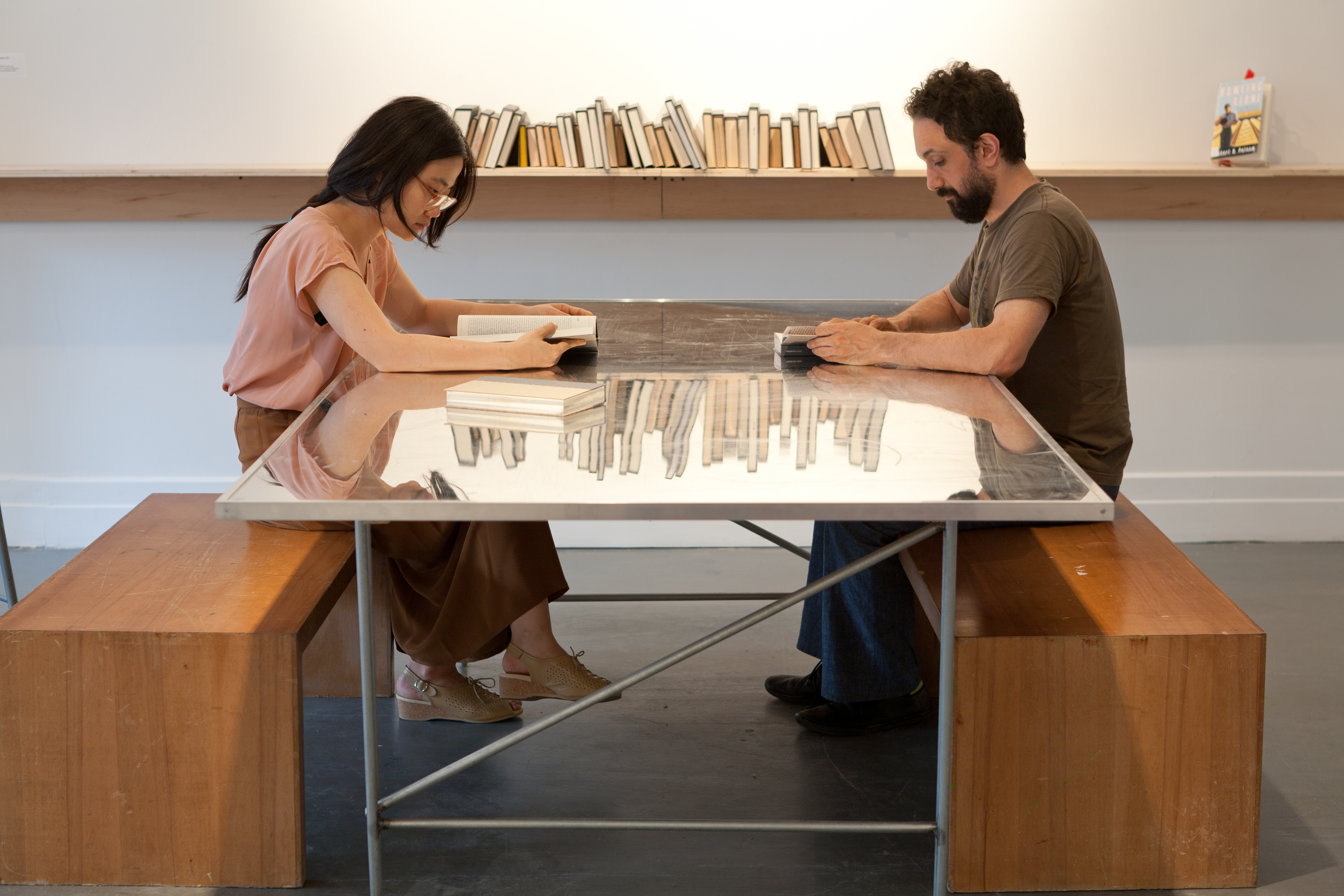
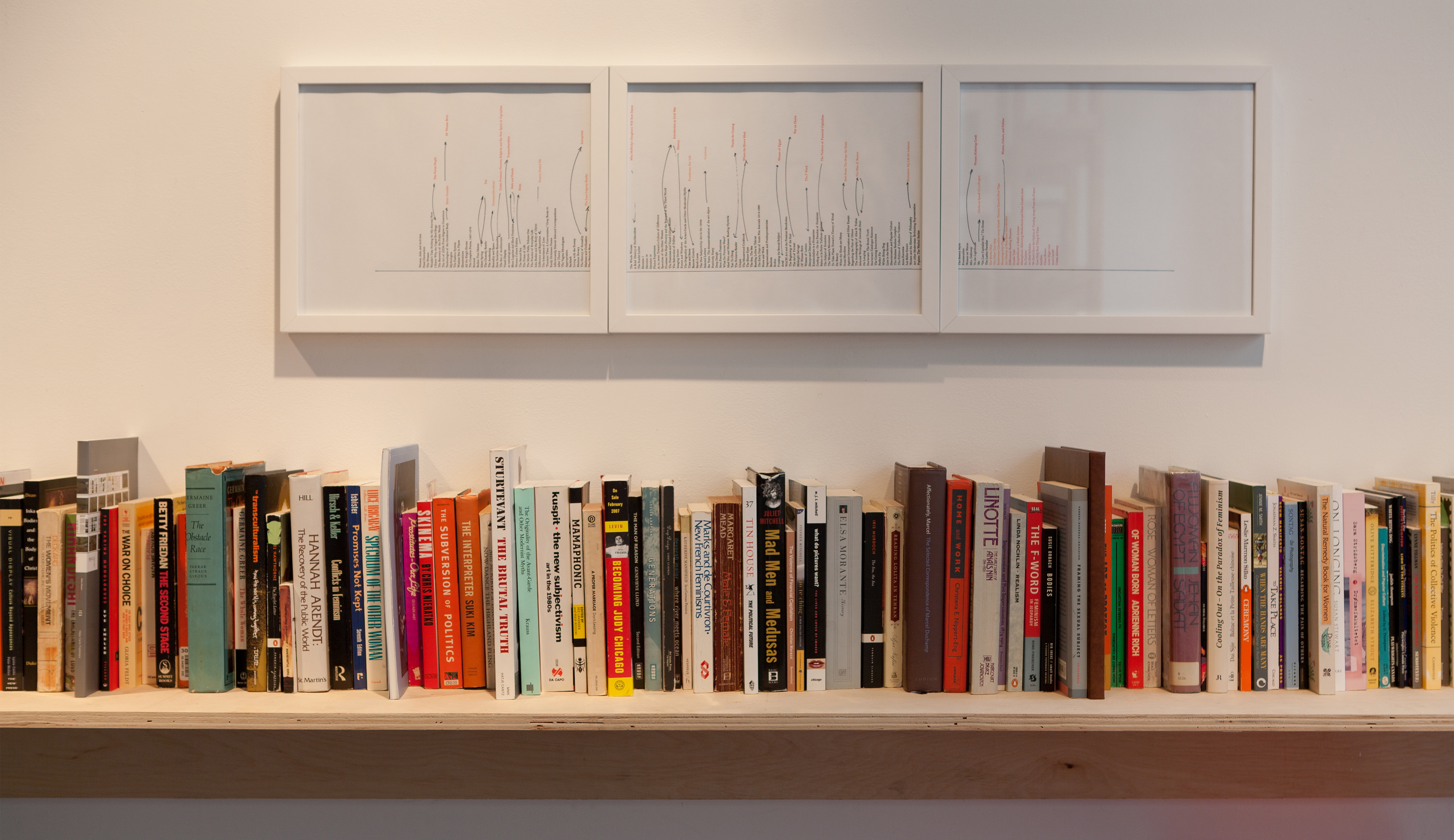
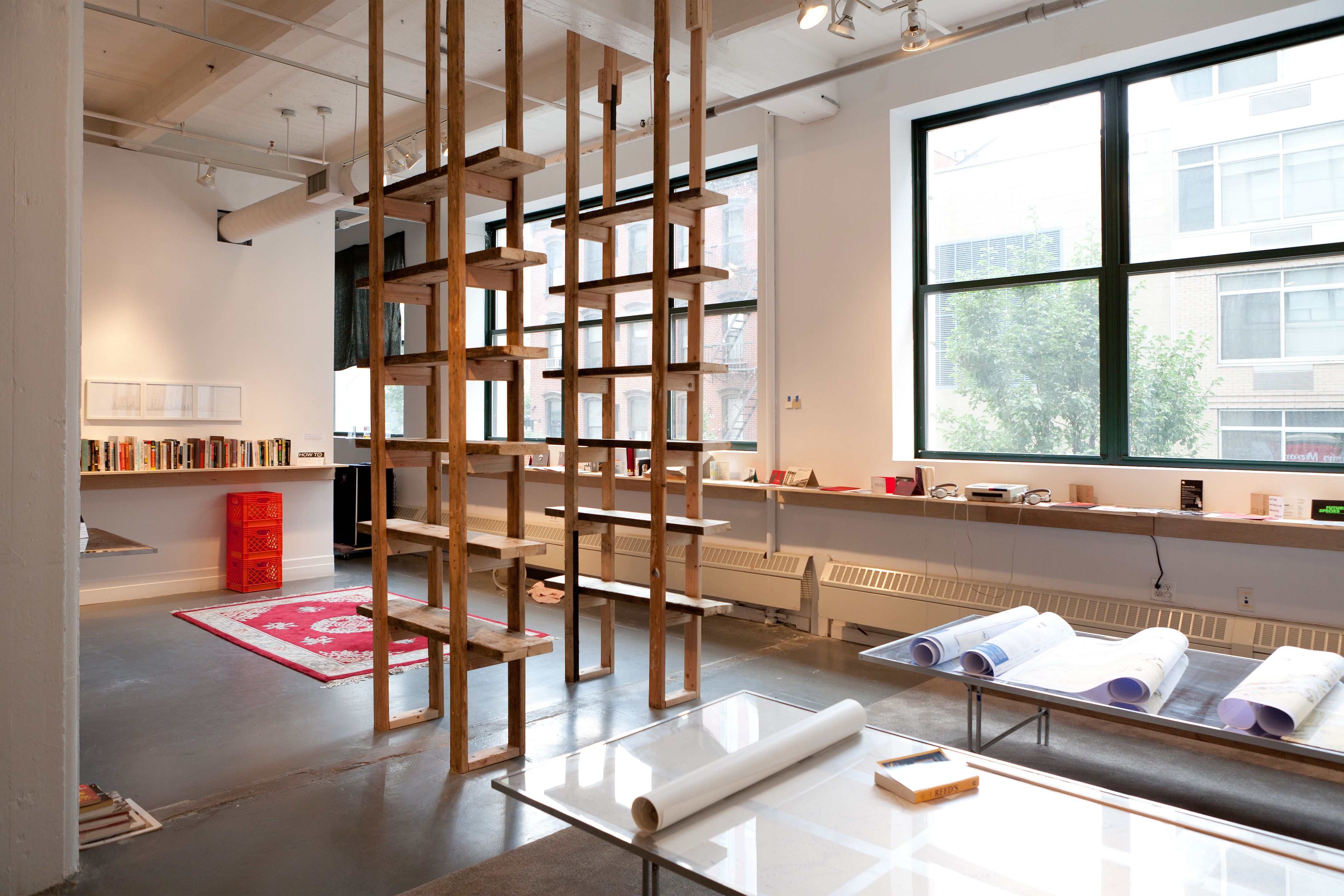
Tuesday, August 2, 2011
Interview with "Missing Library" Participating Artist Angie Waller
Angie Waller: I don't think my project is drastically different from the idea of a library, in a sense it is conforming with that expectation. One characteristic of a library is it is a place where books are not marketed, they are categorized by subject and are often missing their graphic dust jackets. I was more interested in finding similarities in how a library groups books and how we collect information when we are online. In both scenarios, we often are reading text in a democratized context, often discovered through searching. That is an ideal of both the library and Internet scenario although it can be argued that is not always the case.
Q: Data Mining the Amazon seems to make the same sort of social inversion as Unknown Unknowns. Instead of an individual creating a cyber identity through internet output, Data Mining the Amazon seems to provide a prescriptive snapshot of the American liberal or conservative par excellence. Has this two-way interaction between online environments and identities had a profound impact on your creative process over the past few years? Additionally, have you found that this interaction has changed in itself as technology progresses? Do you think this phenomenon is unique to online interactions, or do you think that other spaces, some physical, such as a library for instance, can lead on to both influence and be influenced depending on the structure of the environment?
AW: I don't think my subjects are limited to online environments. I like to think that my areas of inquiry are interesting in a long term period not reliant on an internet fad, but perhaps the online environment inspired the way I process the information I collect and the information I have access to. I think physical spaces are permeable to this influence as well.
Q: The Topless Temps project is both provocative and hilarious, illustrating many poignant social issues while also being a very entertaining concept. But you say that you actually got some earnest responses to the service. Two part question: was getting legitimate responses part of your intention when creating the project, and what was your interaction like with the individuals who would be interested in this service?
AW: The piece was made to relieve some of the anxiety I felt being an office temp. I was not interested in legitimate responses. Honestly, I don't know that I thought that far ahead at the time. I did receive one response from an interested customer. I remember he had an aol email address and I had already decided aol members were trouble based on my experience as a web designer. They were usually someone's mom or dad and not very computer savvy. I didn't respond to the email. My only regret is not keeping the domain name toplesstemps.com, that was gold.
Saturday, July 23, 2011
Lori Brown's Matilda Joslyn Gage Library: A Reflection
 |
| Matilda Joslyn Gage |
more...
Friday, July 22, 2011
BACK BY POPULAR DEMAND: SCRATCH PRINTING WORKSHOP
Dumbo Arts Center
111 Front Street, Suite 212
Brooklyn, NY
Calling all Brooklyn High School Students!
Thursday, July 21, 2011
Web Round-up!
Wednesday, July 20, 2011
DAC Director Karl Erickson and Annie Show on TV!
Sunday, July 17, 2011
DAC Open Call for Exhibitions 2012
We invite artists and curators from all levels of experience to submit proposals for 2012. 3-4 exhibitions will be chosen for production in our gallery space at 111 Front St. in Dumbo, Brooklyn.
For 2012, DAC will be organizing exhibitions around the theme of "Focus." Artists and curators are encouraged to interpret the theme as they see fit.
We will consider all proposals, though we will admit a bias to installation, video, the very loud, the very quiet and/or the very small. Proposals can be for solo or group exhibitions. As DAC is a small (and nimble!) institution, artists and curators will have a very hands on role in developing and installing the show. Proposals that include elements of public programming are encouraged.
Click here for detailed guidelines.
Wednesday, July 13, 2011
Interview with "Missing Library" Participating Artist Marie Lorenz
Q: From teaching sailing I know that spending time on a boat with a small group of people leads to a certain bond- you are all somewhat reliant and trapped with one another. How do you think this notion- in all it's connotations- romantic, terrifying and cathartic, has affected your process?
M.L: The desire to tell a story about that relationship- the one between me and the people stuck in the boat- is what the Tide and Current Taxi project is really about. Sometimes people as me if it is weird to be stuck with a stranger for so long (sometimes 6 hours or even longer). But the thing that happens, and is so reliant, is that we immediately begin to work toward this sort of absurd goal (getting the tide to take us somewhere in the city) and we are instantly bound in our determination. We are talking the whole time about these very practical things (can you move a little to the left, watch out for that branch, etc) and then some very personal things start to surface. It is always fascinating and that is what I try and write the web-journal about.
Q: I noticed you went to RISD. I'm not sure how much time you've spent around Rhode Island, but if you sailed there, you must know that there's an odd culture surrounding it- sailing is historically a hobby reserved for the very rich or fisherman, and there's not a lot of leeway either way. How has the boating culture of Rhode Island affected your work, as well as the sociopolitical issues surrounding sailing?
M.L: Well, Providence is where it all started really. But not with sailing. When I was a freshman at RISD, I started making little rowboats to travel in the canals, which were muddy ditches back then during the reconstruction of the downtown "waterfront district". It was a fascinating time to be in school there, the whole downtown was being ripped up and I used to make these tiny boats and explore tunnels that went under the city. I didn't make a sailboat until I was in Rome. My dad took me sailing as a kid, but in rented boats at marinas operated by the military (he was in the Marine Corps) so my exposure to it was not as class oriented. I do have a sense of the culture that you are talking about, but I think that making the boats I used myself was always a way to invent my own context. For instance, I didn't like the way canoes or kayaks looked- too sporty or something, so I made things that were less recognizable.
Q: How separate do you view your boatbuilding endeavors and your projects? I know in Islip you built a boat that incorporated drawings. I would imagine that the stringency of boat building- the need for adherence to physics, etc, would hinder your creativity. Is this true?
M.L: My process making the boats is not very stringent. (probably why the one sailboat that I made was ripped up by the wind!) I use plywood and fiber-glass, and I end up repairing the boats every year. For me the interest lies not in the boat making itself but in what I actually do with the boats. I think your previous question made me realize that making the boats was initially w away to make up a context from scratch. I used to design them all myself, but when I started using fiber-glass I started working from existing plans. I alter the plans a bit but not in the overall shape, I alter the materials to make the boat lighter (also cheaper and easier to build). I did go to boat building school after RISD- the Arques school is Sausalito. But if they saw the boats I made now I'm sure they would be horrified. They mill their own timber and use hand tools for almost everything. It gave me a tremendous respect for the craft but I don't do anything the 'right' way now.













